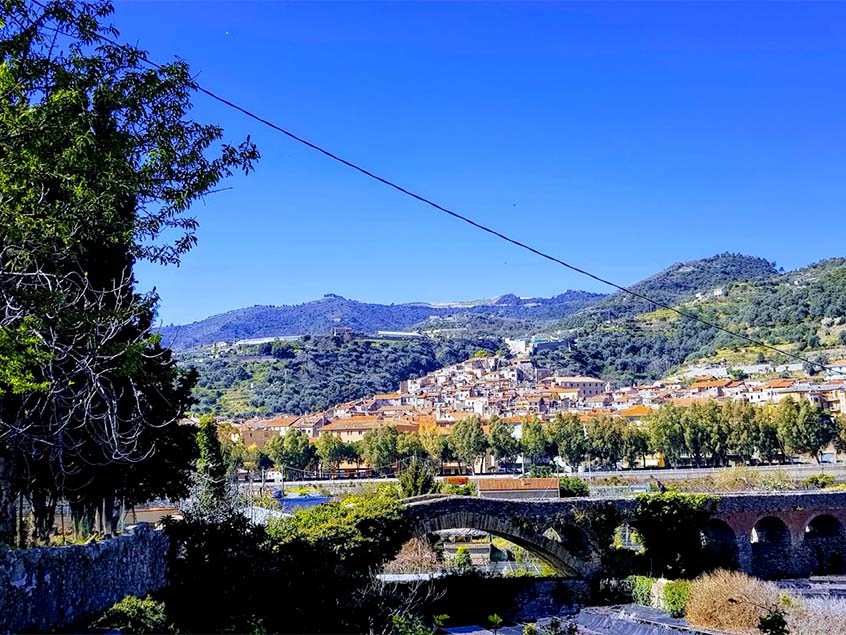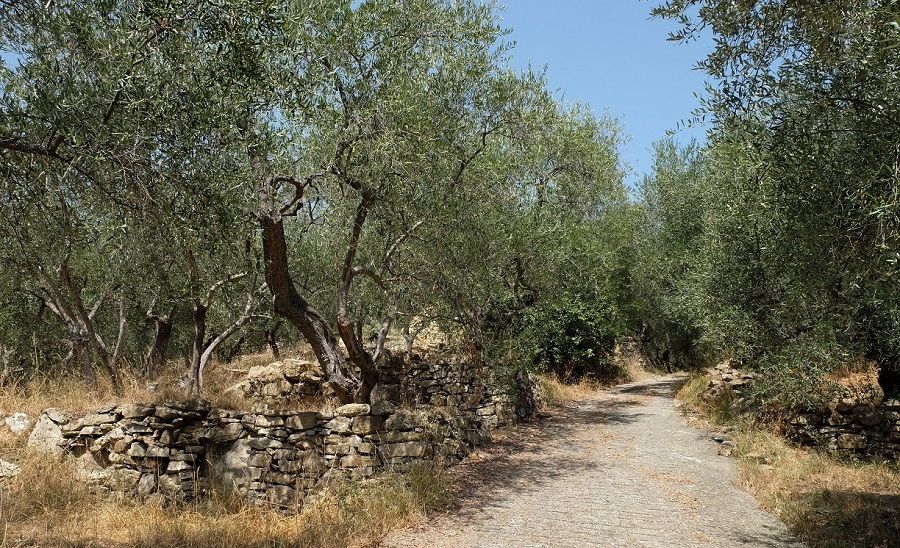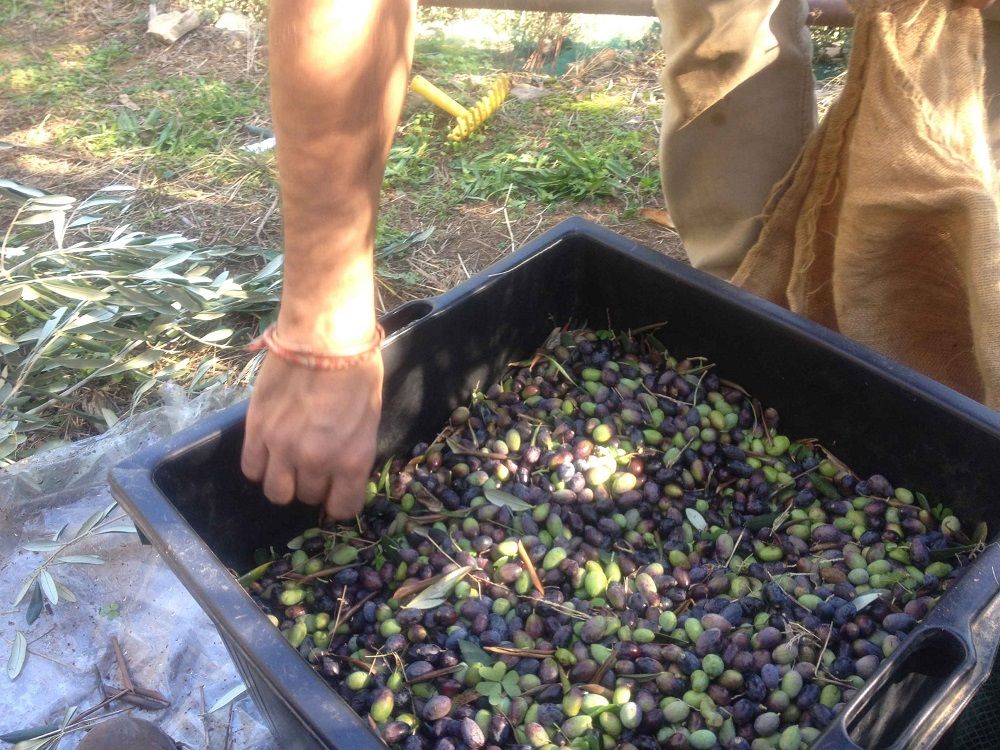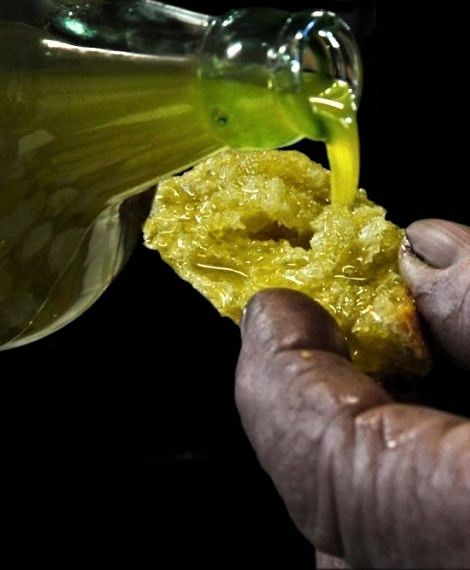Taggiasca: Composite of an Olive

The Taggiasca is a rare and precious variety, characterised by an unmistakable taste and delicacy. Here’s the profile of an olive.
The Taggiasca olive has an aromatic and fruity taste and is the most prized and well-known olive variety in Liguria. It is typical of the western part of Liguria, especially in the province of Imperia. This cultivar has little pulp but a very high oil content (25-26%). The oil obtained from it is highly prized, with a yellow colour (yellow-green in the Savona area), an intense and delicate aroma, renowned for its lightness and velvety, sweet flavour.
The harvesting of Taggiasca olives takes place from November to February. During this period, the terraced hillsides in Liguria are adorned with nets spread under the trees for harvesting. Once ripe, the olives are detached from the tree using poles and sticks passed manually between the trees. The harvested olives are selected and sent to the olive press for cold pressing on the same day.

The History
The first olive tree (not the first olive or oil – those arrived with the Greeks and Romans) probably came to western Liguria with the monks of San Colombano, from the island of Lerins in nearby Provence. However, it was the Benedictine monks of Taggia who perfected the work already done in antiquity on wild olive trees in the Mediterranean scrub, creating the cultivar named after the place of its origin. Through selections, hybridisations, and grafting, the monks developed a variety resistant to pests and weather, small in size but exceptionally productive. From one hectare of olive grove, about twenty quintals of olives are obtained, producing a tasty and high-quality oil.
The Taggiasca olive was so good that it even withstood Saracen raids that destroyed the Taggia monastery in 891 AD. By then, the hills from the plain of Albenga to France were rich in Taggiasca olives, and olive culture had spread throughout the Mediterranean.
Oil Extraction

The oil extraction process mostly still involves crushing with stone mills and the use of hydraulic presses. Some mills, however, employ more modern processes, such as continuous-cycle milling, ensuring high yields while maintaining a constant temperature and preserving the organoleptic characteristics of the fruits.
In traditional milling, olives pass through granite or dove stone mills to break the fruits before pressing. Subsequently, the olives are placed in spurtin, discs made of coconut fiber (or synthetic material) and perforated in the center to be stacked on hydraulic presses that extract the oil must from the fraction. The freshly separated oil is kept at rest in steel vats to prevent oxidation of deposits and allow sedimentation of impurities. Oil intended for immediate commercialisation is usually filtered.
The oil of oliva taggiasca

Taggiasca olive oil has very limited acidity, with an oleic acid percentage below 0.5%, showcasing its high organoleptic qualities. It boasts fragrance, a moderately intense fruity taste tending towards sweetness, and hints of pine nut or raw artichoke with a slight spiciness. Best stored in a dark, cool, and dry place, it’s ideal for cold consumption.
Certified DOP and IGP Quality

Liguria takes pride in being the first Italian region to receive European recognition for DOP (Protected Designation of Origin) olive oil production. Recently, the Ministry of Agriculture approved the IGP (Protected Geographical Indication) certification for Ligurian Taggiasca olives.
The DOP Riviera Ligure is reserved for extra virgin olive oil meeting conditions outlined in Regulation (EC) No. 123/97. Additional geographical mentions identify characteristics of oil types produced in various sub-zones:
- Riviera dei Fiori
- Riviera del Ponente Savonese
- Riviera di Levante
Each sub-zone corresponds to a specific olive variety landscape (mainly Taggiasca, Lavagnina, Razzola), defining the characteristics of the oil produced from these indigenous olives. Generally, DOP Riviera Ligure oil is characterised by high oleic acid content (over 70%), low linoleic acid content, and low acidity. Organoleptically, it ranges in colour from yellow to yellow-green, with a fruity flavour transitioning from sweet to subtle notes of bitterness and spiciness across the region.
Useful contacts for further information
Consorzio per la Tutela dell’Olio Extra Vergine di Oliva D.O.P. Riviera Ligure
Via T. Schiva, 29, 18100 Imperia
Tel. +39 0183 76 79 24; Fax: +39 0183 76 90 39
info@oliorivieraligure.it – oliorivieraligure@pec.it
https://www.oliorivieraligure.it



